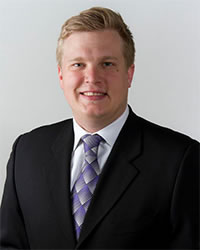|
Four Areas to Maximize your Team's Practice Session By: Billy Ebel - Assistant Coach - Lipscomb University (2015 AVCA Thirty Under 30 Recipient) Provided by: American Volleyball Coaches Association
First, I begin planning a practice starting with an educational/ tutoring session. This educational session can be used for skills, defense to offensive systems, or mental growth training. We begin practice by discussing the focus for the day and the areas in which we need to improve. This immediately puts the team's goals in retrospect and they begin to believe it is achievable. I believe it is important to let the team know the "Focus of the Day". I have found that three main topics to cover in practice tend to be achievable in the certain about of time that we train our athletes. Second part of maximizing our time would involve positional work. As you gain the attention of your athletes at the beginning of the practice with the "Focus of the Day", the positional and small group work can help with these. We typically go to a positional breakout at some point during the practice to identify specific areas of the game that need improvement. For example, we would group together our liberos and outsides and then setters and middles. Setters and middles focus of the day could be "transition attacking" or "block to transition", etc. Outsides and liberos focus of the day could be "tilt/platform work" or "defensive positioning." We want to identify specific areas that give them an end goal for improvement.
Third part would involve small group training. This part of practice planning in our gym is very valuable to our success. This would be a great time to add layers to certain skills. For example, in our gym at Lipscomb we work a lot on block coverage. We designed a drill with three boxes in left front, right front and middle front. Each coach is on a box with a blocking pad. Another coach enters balls from the service line to a team of six. The team of six then receives the ball, runs a play, the attackers now attack the ball into the coaches blocking pad and the defense is forced to cover. They continue to transition and attack into the blockers on boxes for two balls and the third ball they go for a clean kill. We believe this drill begins to create a flow amongst the players who are covering their attackers. We take an element of the game and control the success by breaking down the skills into layers. Last part of maximizing our teams practice would involve a full team competition. Frequently at Lipscomb we begin our practice with a competitive team drill and end with a competitive team drill. We love to gain their focus early to set the tone for practice and end the practice with a competition to leave them wanting more when they come back the next day. It is very important to design drills that are going to get your team to "THINK, PROCESS, and WIN". We want to challenge them and put them in scenarios that are staying consistent to our focus of the day. For example, we use a drill in our gym called "4 v 6". This drill puts emphasis on the six side. Their ultimate goal in the drill is defensive mind set. Every ball is given to the side with four (setter, middle, outside, right side), and we usually have libero over there to pass to target. The side of four attacks the ball to the side of six, the side of six defends the ball, after the ball is dug, the send the second contact back over to the side of six. This would give the team of six a point. The side of four scores by getting a first ball kill. You can put emphasis on either side, either first ball kill or defense. I find this drill to be successful and work on an array of skills.
Planning successful practices takes a lot of preparation depending on your teams needs. It is very important to plan practices that get your players to "THINK". Remember the four areas of focus: Educational, Positional, Small Group and Team Competition. I feel these are four important areas that can help lead to a successful practice. |




 As coaches begin to plan a practice, one of the first things we think about is how to manage our time efficiently. We'd like to think all of our practices are run with great precision and precise detail. Unfortunately, this isn't always the case. As I am designing drills to maximize our teams potential, I start with four very basic areas to cover over a 2-3 hour practice.
As coaches begin to plan a practice, one of the first things we think about is how to manage our time efficiently. We'd like to think all of our practices are run with great precision and precise detail. Unfortunately, this isn't always the case. As I am designing drills to maximize our teams potential, I start with four very basic areas to cover over a 2-3 hour practice. 




